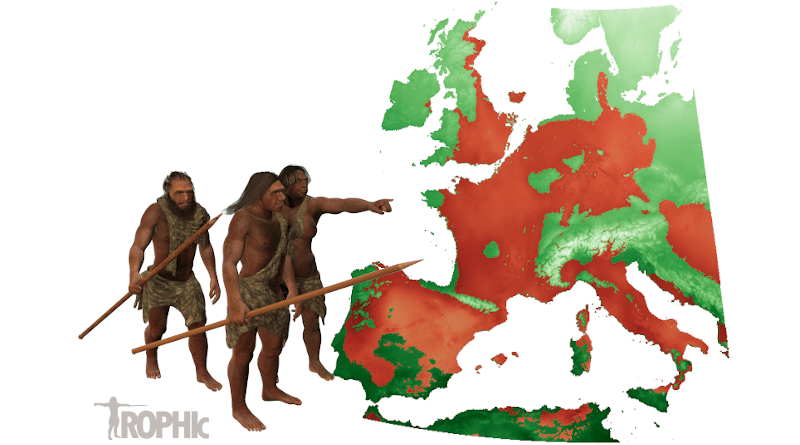The Middle Pleistocene Population Of Europe Could Have Reached 25,000
Ana Mateos and Jesús Rodríguez, scientists at the Centro Nacional de Investigación sobre la Evolución Humana (CENIEH), have led the international team that has published a paper in the journal Scientific Reports, showing that the human population of western Europe could have been larger and more widely distributed than was believed, and perhaps reached 25,000 individuals. This work was performed in collaboration with the geographers Christian Willmes, of the University of Cologne, and Christian Sommer, of the University of Tübingen, as part of the project TROPHIc.
The period from 550,000 to 350,000 years ago was crucial for human evolution in Europe, as this was when the process that would give rise to the Neanderthals started and the foundations were laid for the development of Levallois, a new stone tool manufacturing technology. In addition, it was an era of strong climatic oscillations which must undoubtedly have affected the human populations and constrained their evolution, leading them to modify their geographical distribution in step with the changes in climate.
But the density these populations could have reached did not vary drastically between the cold periods and those when conditions were milder. “We have estimated that the maximum sustainable population in western Europe could have oscillated between 13,000 and 25,000, as the climate varied. However, these variations were almost exclusively due to changes in the size of the habitable area, not to changes in the inhabitant density the environment could support”, clarifies Mateos.
Contrary to what is usually thought, the results show that humans were not left isolated in the peninsulas of southern Europe during glacial periods. Indeed, the model predicts a contiguous habitable area that connected the Iberian Peninsula with the British Isles through what is now France and western Germany. It follows that there existed extensive areas habitable by humans during the European Middle Pleistocene.
Niche modeling
The first objective of the research team in this study was to plot the changes in human distribution on a series of maps. To do this, they applied a technique known as “niche modeling”, starting with a sequence of maps showing the changes in precipitation and temperature over millennia. “This technique is habitually used to forecast the distribution of modern animals and plants and it has been applied many times to fossil organisms, including humans. But this is the first time that it has been applied to this period and geographical scope”, explains Rodríguez.
The second objective was to estimate the human population density the Pleistocene ecosystems could have sustained in the habitable areas of Europe. To this end, the team devised a model to predict the population density a society of hunter-gatherers could reach under different environmental conditions, using ethnographic data.

